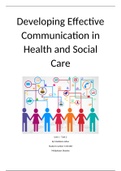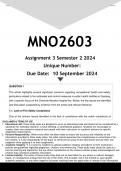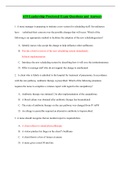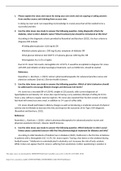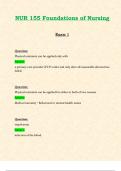Essay
Developing Effective Communication in Health and Social Care (Barries)
- Institution
- PEARSON (PEARSON)
Barriers such as noise, lighting, time, seating, space and settings. All these are factors that may influence communication and interpersonal interactions in health and social care settings. P3 P4 M2 D1
[Show more]
